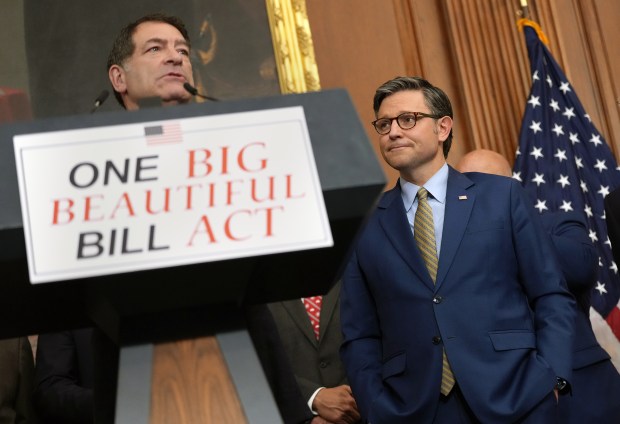In their Sept. 9 op-ed “What can Illinois do to better protect workers from inhaling silica dust,” professors Linda Forst and Lee Friedman, while well intended, incorrectly state that “prevention of silicosis is easy” and erroneously focus on Occupational Safety and Health Administration regulation enforcement against fabrication shop hirers/employers. In fact, when it comes to fatal accelerated silicosis from artificial stone fabrication, prevention is not at all easy; rather, it is virtually impossible.
Reliance on regulatory enforcement is based on three false assumptions: Artificial stone countertops can be fabricated safely, OSHA can enforce existing regulations to prevent workers from getting silicosis from artificial stone dust and the problem is limited to certain irresponsible hirers/employers.
Artificial stone, which has recently become overwhelmingly popular, contains 95% silica. As a result, controls such as wet methods and respirators are not effective in preventing accelerated silicosis. It is economically impossible to make artificial stone fabrication safe. Australian health authorities reached the same conclusion, which is why Australia banned these products in 2024.
There are tens of thousands of fabrication shops across the country. OSHA and equivalent state agencies lack financial resources and manpower. Moreover, even when done in compliance with regulations, artificial stone fabrication still can cause accelerated silicosis.
This epidemic is international in scope. Before artificial stone fabrication workers were diagnosed with silicosis in California and Illinois, outbreaks of silicosis were reported in Spain, Israel and Italy, with later outbreaks in Australia and China. Fabricators have also been diagnosed with silicosis in other states. And the list is growing.
The solution to the problem is not regulation enforcement. The product is too deadly to be fabricated safely. Artificial stone products should be banned in the U.S. That would prevent even more young, mostly immigrant workers from suffering and dying from this deadly new product. Consumers need to be informed that their beautiful new artificial stone countertop more than likely comes at a cost of the life of the worker who fabricated it.
— James Nevin, partner, Brayton Purcell LLP, Novato, California, and Raphael Metzger, founder, Metzger Law Group, Long Beach, California
Inhaling construction dust
Regarding Linda Forst and Lee Friedman’s op-ed: Their cited industries are only the tip of the iceberg. Add the production of gravestones and construction dust. I learned recently that coal miners in West Virginia, in addition to facing the threat of black lung disease from inhaling coal dust, are now subject to silicosis as they have to cut into limestone to expose the coal layers. Silica is 20 times more toxic than coal dust.
I’m a retired public servant who worked for the city of Chicago and the Metropolitan Water Reclamation District of Greater Chicago; I was a mechanical engineer who did environmental work. I’ve been an Occupational Safety and Health Administration competent person for the past 34 years.
Silica has bothered me for a long time. With construction work here in Evanston, I’ve seen a lack of safety oversight by the city. Clouds of dust confront Evanston’s citizens. The demolition for and construction of Northwestern University’s new Ryan Stadium perpetuates this. When I was employed, I’d stop this type of work and only allow it to continue when the workers got their act together.
My mantra is: “If you can see it or smell it, you’re already in trouble!”
— Fred J. Wittenberg, Evanston
Local control over water
Dan Pogorzelski, a Metropolitan Water Reclamation District of Greater Chicago commissioner, makes a good point that the Great Lakes are off-limits to water users here in the West (“The West should put its straws away. Great Lakes water is not for sale,” Sept. 1). The compact that governs how Great Lakes states manage their water is like the century-old compacts governing the Colorado River.
What we have in common is the desire for local control of our own water supplies. The proposal for a one-size-fits-all national water policy is irresponsible, like the effort to mislead readers into believing that water from the Great Lakes is at risk of being taken by other states, as Jay Famiglietti does in his New York Times essay.
I suspect that water users in Chicago want control over their own resources just as Western farmers do as they grow much of the food we all depend on.
— Mike Wade, executive director, California Farm Water Coalition
Addressing overdose crisis
Vice President Kamala Harris and President Donald Trump didn’t address the overdose crisis during their presidential debate. I have gone through an overdose, as have three family members, during both Republican and Democratic administrations. More than 600,000 Americans died from overdoses under Democratic and Republican administrations from 2017 to 2023.
Under President Donald Trump’s leadership, because of inaction and policy failures, 70,237 Americans died of overdoses in 2017. In 2018, 67,367 Americans died of overdoses. In 2019, 70,630 Americans died of overdoses. In 2020, 91,799 Americans died of overdoses. In total, about 300,000 Americans died from overdoses during the Trump years.
Under the leadership of President Joe Biden and Vice President Kamala Harris, because of inaction and policy failures, 106,699 Americans died of overdoses in 2021. In 2022, 107,941 Americans died of overdoses. In 2023, 107,543 Americans died of overdoses. In total, more than 322,000 Americans have died from overdoses during the Biden-Harris years through 2023.
What are Harris and Biden doing for those living on the front lines of this crisis, right now? What harm reduction practices are they going to institute to save American lives from overdoses?
These leaders have had enough time. They must rethink their approach to the overdose crisis.
— Jordan McClements, scholar, Medill School of Journalism, Northwestern University
Ways to prevent suicide
September marks Suicide Prevention Month. Suicide fatalities in the state of Illinois increased by 17% from 2013 to 2022. We need to educate one another about the steps we all can take to address this crisis.
In high-stakes emotional situations, it can often feel like there is nothing we can do, but working with a loved one to reduce access to guns can be lifesaving, for example. There are ways to help, from dialing the 988 Suicide and Crisis Lifeline to securely storing firearms in the house or storing them outside the house, as well as using Illinois’ extreme risk protection orders.
Not every crisis is the same, which is why it’s important that everyone understand that there is a continuum of interventions that can be taken to keep our loved ones in crisis safe.
— Megan Anne Chavers, Chicago
Ask of the Art Institute
How wonderful that the Art Institute has received an enormous gift from donors eager to build a new wing. As longtime members of the museum, we can only hope that these funds will also keep the museum open seven days a week instead of the current five.
The Shedd Aquarium is open seven days a week, as are the Adler Planetarium and the Museum of Science and Industry. Why not the Art Institute?
— Michele and Douglas Bukowski, Berwyn
Decency to older drivers
Speeding, texting while driving, lane surfing, driving under the influence, munching lunch behind the wheel, street racing, driving without insurance, tailgating, doing doughnuts, running a stoplight and acting with road rage: Do we associate these actions with over-80 drivers? Oh, right, so maybe Illinois House Bill 4431 is on to something after all.
— William Murray, Palatine
Submit a letter, of no more than 400 words, to the editor here or email letters@chicagotribune.com.




